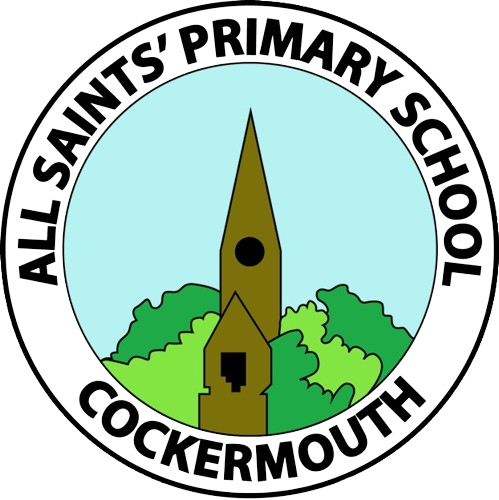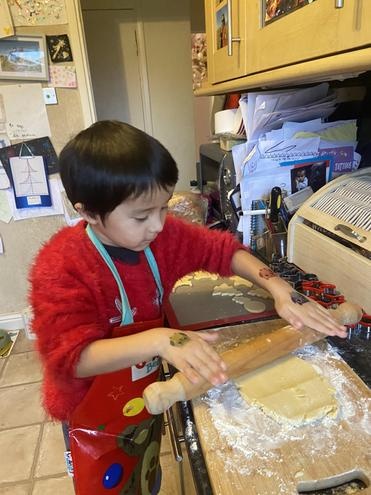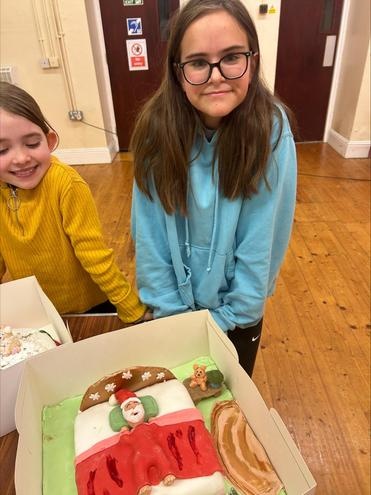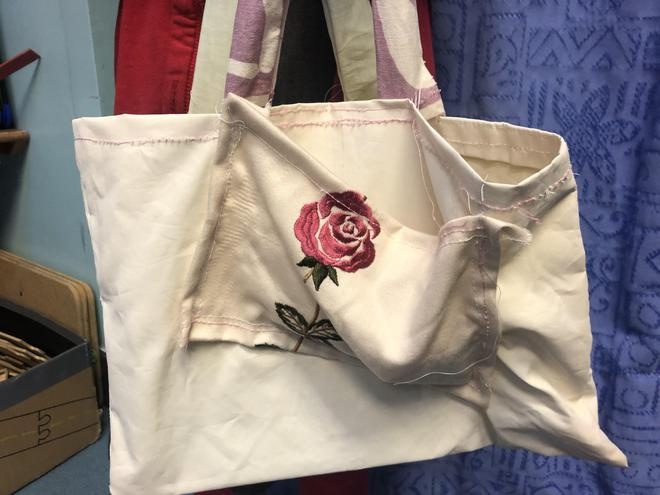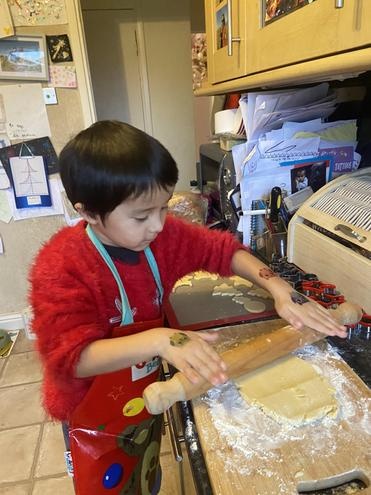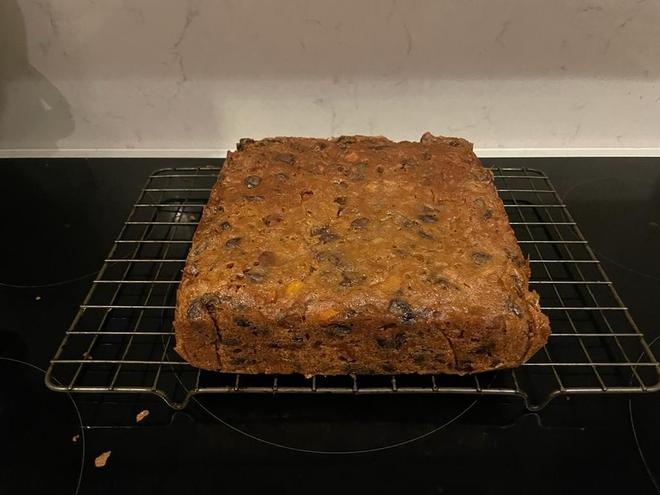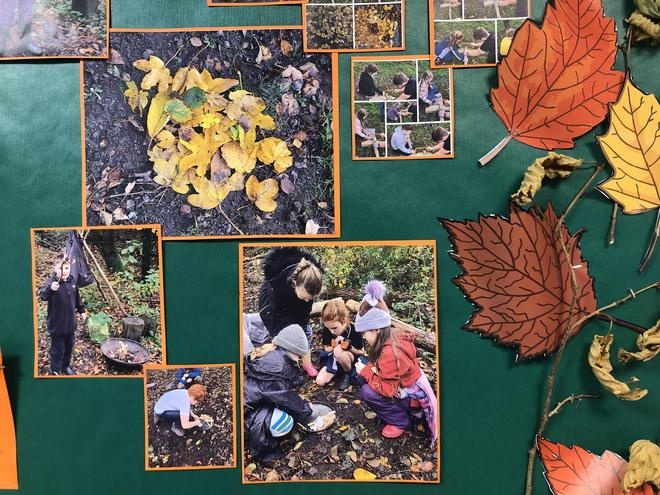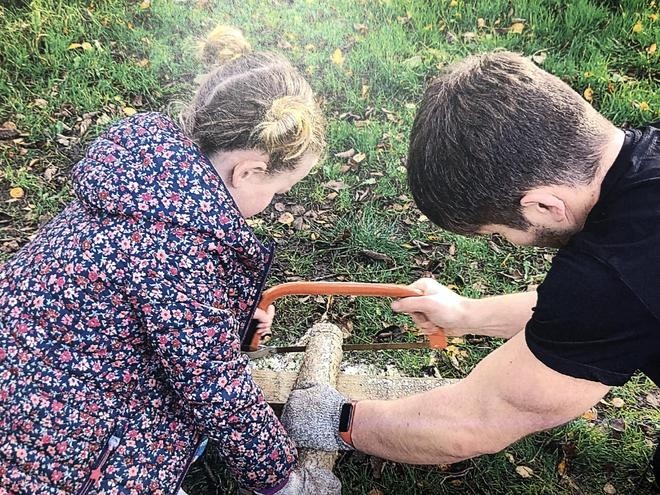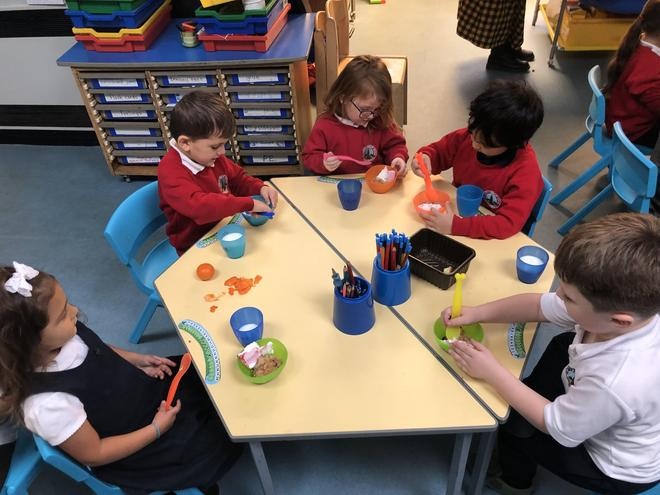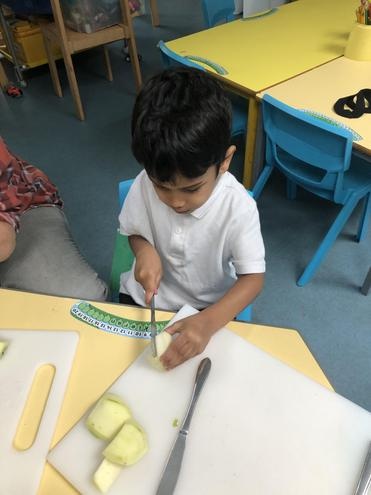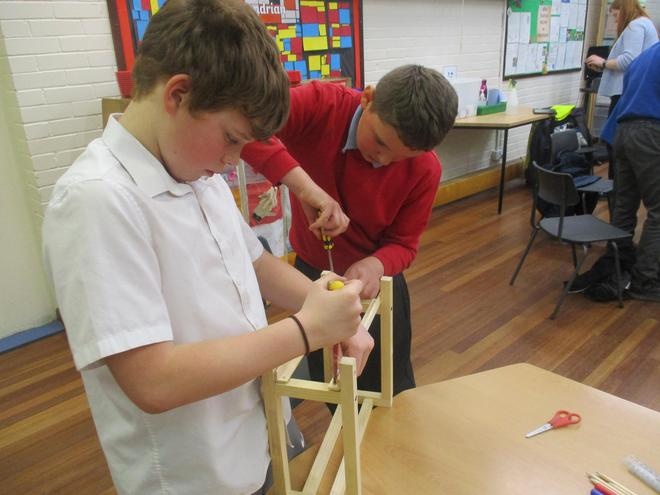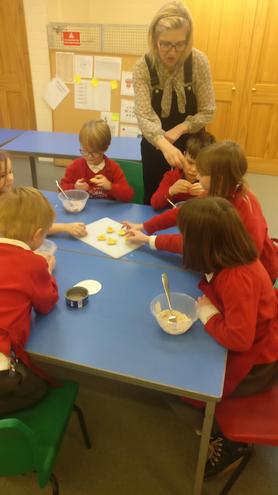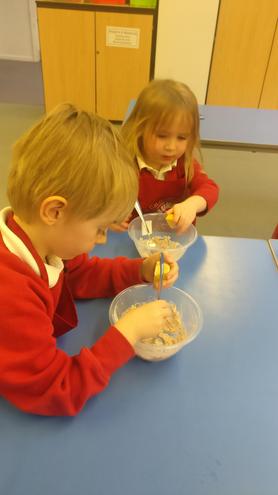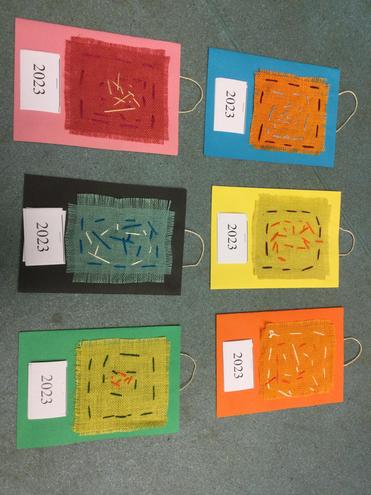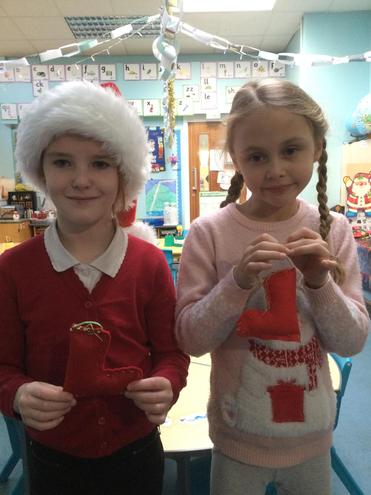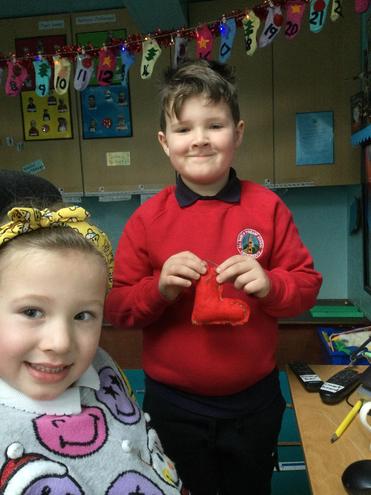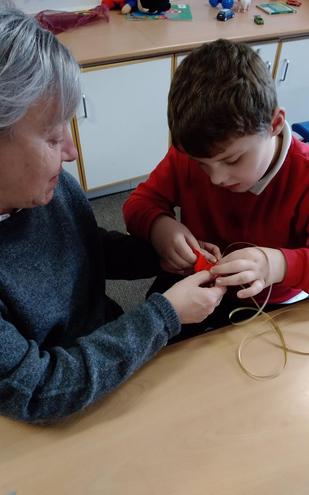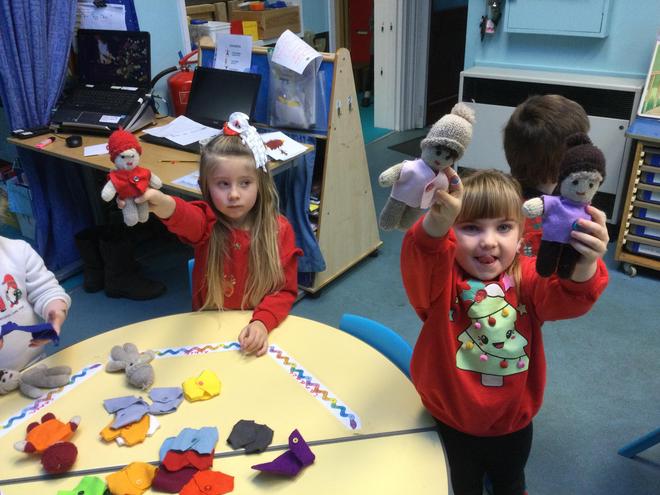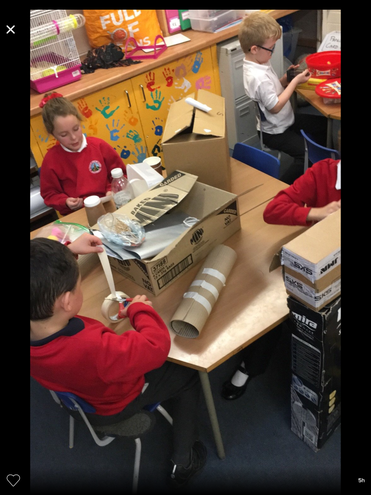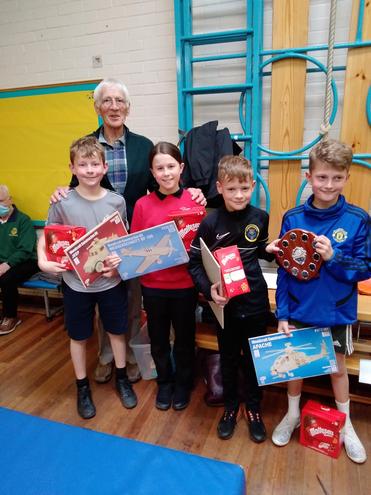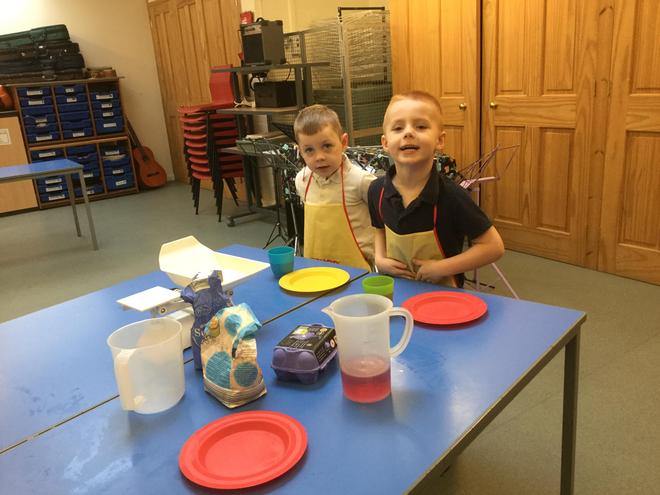Design Technology
D & T at Home
We have some very creative children in school. Here are some examples of what they have been getting up to at home, some of which have been inspired by activities in class.
Year 4 making wooden reindeer in forest school time
Reception Class Autumn Cooking
Inter School D&T Competition 2023
As previous winners, this was held at All Saints. Our teams did really well but were pipped to the winning post for the first time in years.
Vision
Our aim is that D&T is loved and enjoyed by all; staff and children across school from Nursery to Year 6, including SEN children and those in our strategic facility. We are an inclusive school and believe it is important for all children to have equal opportunities. We encourage our children to want to build on their own skills and learning and develop their D&T skills from the youngest in Foundation Stage onwards and upwards.
This school year we have started using the Kapow scheme of work which ensures the children progressively cover the knowledge, understanding and skills required by the National Curriculum.
We also provide opportunities to learn about key events and individuals who have helped shape the world. We aim to inspire children to be the innovators of the future by showing them the impact of design and technology on the real world. As an Eco School, we hold environmental awareness and issues close to our hearts and aim to reuse and recycle wherever possible within our work as well as using Fairtrade products.
We encourage children to be collaborative, innovative and creative when designing solutions to real and relevant problems. The discussion required to solve problems is valued as an important part of children’s learning and is a vital part of children’s speaking and listening skills.
As a cross-curricular subject, the children’s design and written work is expected to be of a high standard equivalent to that expected throughout their learning. Activities will be taught on a whole class basis with an adaptive teaching approach, where individuals will be given tailored support, resources and guidance according to their differing needs. This way, all children experience the full curriculum content and have the opportunity to achieve ambitious goals whatever their needs.
Mrs Cooke's Y1 Cookery Club
|
Mrs Cooke's Y1 Cookery Club |
The first group |
Making starters |
|
main course |
and desserts, week by week |
WHOLE SCHOOL TEXTILES FOCUS
Before Christmas the whole school was challenged to create a Christmas gift using textiles. Here are just a few of our creations.
|
Hessian calendars |
Tree decorations |
Cross-stitch cards |
|
Cross-stitch cards |
Stuffed decorations |
Book covers |
|
Threaded decorations |
Threading |
Textile trees |
|
Waistcoats for teddies |
Stuffed decorations |
Woven calendars |
|
Clothes for teddies |
Clothes for teddies |
Dressing Reception class's teddies |
|
Dolls clothes |
Weaving |
Cross-stitch cards |
Content and implementation
National curriculum guidance requires children to learn in the areas of design, making, evaluation, technical knowledge and cooking and nutrition.
We have follow the Kapow scheme of work which is organised into 6 key areas which are revisited each year. These consist of:
- Cooking and Nutrition. The children learn where food comes from, about a balanced diet, food preparation and cooking and hygiene and safety. We also use the Phunky Food curriculum to teach the skills and techniques required in this area. Much of the nutritional knowledge is also taught cross-curricular in science work.
- Mechanisms and mechanical systems where children learn about mechanism for movements i.e. cams, followers, levers and sliders.
- Structures where children learn about the functional and aesthetic properties of different materials for strength, stability, stiffening and reinforcement.
- Textiles, where children learn the techniques and skills to work with fabric.
- Electrical systems, where children learn about circuits to create electrical products.
- Digital world where children learn about digital products that monitor and control. The children also learn to use CAD software for design. This is also incorporated into cross-curricular ICT lessons.
Throughout lessons, children learn the vocabulary to express themselves and are expected to discuss problems together using rich and technical language which is targeted in lesson objectives.
D&T work that we have enjoyed
|
Year 2 make robots out of junk models and consider how to construct moving parts |
Felt making |
Y5 designed and decorated Mayan masks |
|
Making robots in Year 2 |
Y1 made insect hotels as part of our whole school environment D&T project |
We enjoy a lot of cooking. |
|
Y3 learned about Egyptian shadufs, and made working models of them |
Research about Egyptian shadufs |
Reception baking a cake |
|
Sewing in Reception |
Reception class woodwork and making corner |
Curriculum overview
Whole school long term plan overview
Impact
We take part in the local Rotary Club’s annual D&T competition. The children are set a task to complete and are judged according to group collaboration, making skills and product success. We are proud to have been regular and repeat winners, which reflects the successful impact of our school’s curriculum and ethos.

Competition winners
|
|
|
Assessment and recording
The impact of our D&T curriculum is monitored and assessed using class assessment and evidence books within which each teacher keeps a record of the work done in that class. These include a copy of the knowledge organiser for each unit of work, examples of design work done by children working at different levels and photographs of a range of children’s work. Technical vocabulary will be focused on being displayed, spoken and emphasised in lessons.
On completion of a unit of work, the teacher will also include a class list keeping a record of individual children’s achievements and attainment. This will be a summary judgement about whether each child is working at, above or below the expected level.
The D&T lead teacher regularly completes lesson observations throughout school, including interviews with children to assess their knowledge and understanding.
EYFS
Design and Technology in the early years appears in the ‘Expressive Arts and Design’ strand of the curriculum as well as the ‘Physical Development’ strand. In our Nursery and Reception classes there is a lot of emphasis on fine motor skills, ensuring the children have a strong foundation in using a range of tools and equipment. We have ‘making corners’ which include tools ranging from scissors and hole punches to vices and hacksaws for woodwork. Here the children can practice and embed shaping, assembling, joining and decorative skills which they learn in teacher-led activities whilst following their own ideas and creativity.
The children also work regularly with construction kits, learning the basic principles of construction and mechanisms.
Children also learn about the importance of a healthy diet for good health. They learn about food groups and take part in regular cooking activities which form strong foundations for the food and nutrition part of the D&T curriculum in key stages 1 & 2. They learn measuring and weighing skills and join in with a range of cooking and baking techniques.
The children often work outside too, constructing and building on a large scale and learning about the safe handling of equipment, including fire safety when they have the opportunity to enjoy building fires and cooking simple things like baked potatoes, popcorn and smores.
We aim for all children to be proficient in handling tools and equipment to construct successfully with a purpose in mind. The design process is usually based on talking and listening and arranging and rearranging materials and components.
Enrichment opportunities
We offer a range of enrichment opportunities to encourage children to further their interests and skills.
Year 2 offer a very popular weekly engineering club where the children can take part in a series of engineering activities.
We also offer a KS1 after-school cooking club, which has been stimulated and resourced by the ‘Phunky Food’ course attended by one of our staff.
There is also a KS2 cooking club run by another staff member which draws on Phunky Food resources.
Year 1 and 4 have weekly ‘forest schools’ lessons which require the skilled handling of tools and equipment and the application of many D&T construction skills in the real world. Children can also learn cooking skills on open fires. Throughout this, the children are also made aware of their environment and the impact we can have on it for better or worse.
We are building up STEM online contacts so that children can understand how D&T is relevant in the real world and be inspired to pursue science, technology, engineering and maths studies and careers.
Years 5 & 6 attend React engineering shows which showcase inspiring and fascinating science and engineering.
Enrichment planning, subject to change year on year
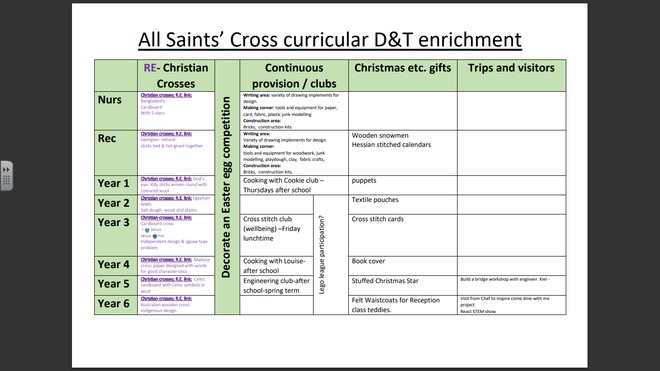
Engineering club
|
We had to learn how to build a circuit |
We made drawbots. |
It was fiddly. |
|
Balancing and testing different loads on the drawbots |
Fixing on the circuit |
Changing the shape of the load. |
|
|
|
|
|
|
Cooking and Baking
|
|
|
|
|
|
|
Staff CPD
Strong subject knowledge is vital for staff to be able to deliver the design and technology curriculum.
We have used staff meetings to keep staff up to date, to plan our curriculum collaboratively and to ensure all staff have the relevant understanding of what needs to be taught, to identify key vocabulary, skills progression and share key questioning skills about children’s knowledge of processes and previous knowledge.
Staff are also encouraged to enrol in their own training through the ‘Phunky Food programme’ which has been very useful for food and nutrition, as well as courses on coding and CPD courses available through Kapow. The curriculum leader has taken part in coordinator training and is part of a local D&T consortium group with links to other schools.
